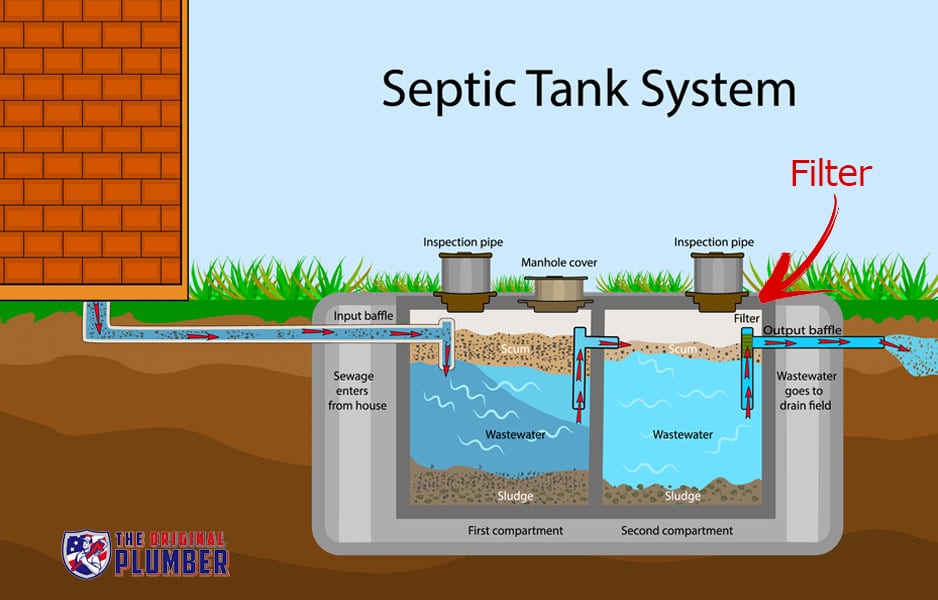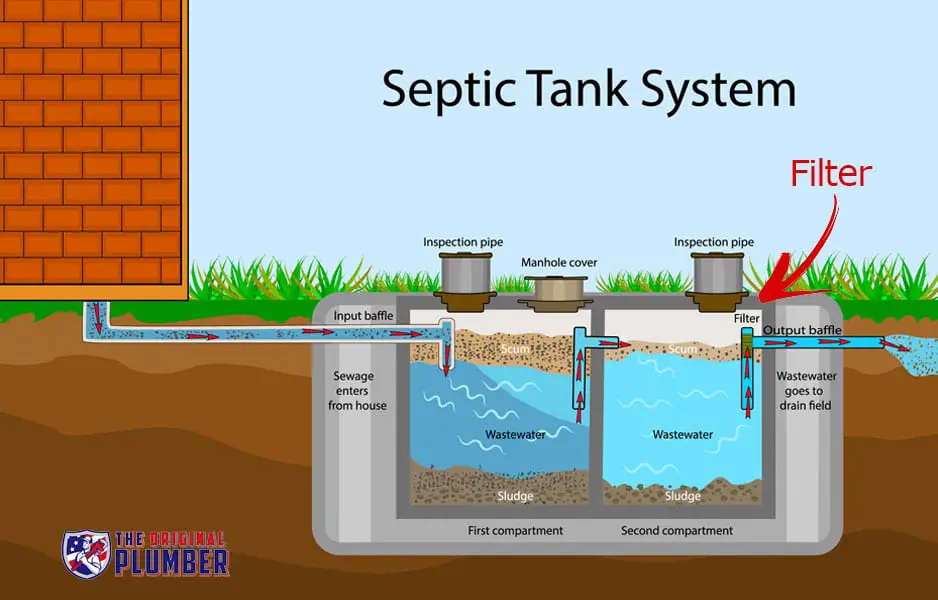Keeping your septic tank clean is crucial to maintaining a healthy and hygienic environment in your home. One of the most important components of your septic system is the filter, which helps to remove debris and prevent blockages. However, over time, the filter can become clogged, leading to a host of problems. In this guide, we’ll take a look at how to clean your septic tank filter to ensure that your septic system runs smoothly and efficiently.
Whether you’re a seasoned homeowner or a new one, cleaning your septic tank filter can seem like a daunting task. But with the right tools and a little know-how, it’s a simple and straightforward process that can be done in just a few easy steps. So let’s dive in and take a closer look at how to keep your septic tank filter in top condition.
Cleaning a septic tank filter is a crucial maintenance task that should be performed every 6-12 months. Here’s how to do it:
- Locate the filter by consulting your owner’s manual or contacting a septic system professional.
- Turn off the power supply to the septic system.
- Carefully remove the filter from its housing.
- Clean the filter using a garden hose or pressure washer.
- Reinstall the filter and turn the power supply back on.
Remember to always wear gloves and protective clothing when handling septic system components.

How to Clean Septic Tank Filter: A Step-by-Step Guide
Understanding the Septic Tank Filter
Septic tank filters are an essential component of a septic system. They are designed to capture solid waste and prevent it from entering the drainfield. The filter is typically located near the outlet of the septic tank, and it is responsible for removing debris and preventing clogs. It is crucial to keep the filter clean to maintain the functionality of the septic system.
The filter is made of plastic or fiberglass and has a mesh screen that traps solids as they pass through the septic tank. Over time, the filter can become clogged with solid waste, reducing its effectiveness. That’s why it is essential to clean the filter regularly.
When to Clean the Septic Tank Filter
It is recommended to clean the septic tank filter every six months. However, if you have a large household or use more water than average, you may need to clean the filter more frequently. You can check the filter by opening the septic tank lid and inspecting it. If you notice that the filter is clogged with solid waste, it is time to clean it.
Steps to Clean the Septic Tank Filter
Here are the steps you need to follow to clean the septic tank filter:
- Locate the septic tank filter. It is usually located near the outlet of the septic tank.
- Turn off the power to the septic tank to avoid any accidents.
- Remove the lid of the septic tank.
- Remove the filter from the tank. You may need to use a wrench to loosen the filter if it is stuck.
- Inspect the filter for any signs of damage. If the filter is damaged, you may need to replace it.
- Rinse the filter with water to remove any solid waste.
- If the filter is still dirty, soak it in a cleaning solution for a few minutes.
- Rinse the filter again with water.
- Replace the filter in the septic tank.
- Turn the power back on to the septic tank.
The Benefits of Cleaning the Septic Tank Filter
Cleaning the septic tank filter regularly can provide several benefits. It helps to maintain the functionality of the septic system and prevents costly repairs. A clogged filter can cause the septic system to back up, leading to sewage backups in your home. Additionally, a well-maintained septic tank filter can help to prevent odors and improve the overall health of your septic system.
Septic Tank Filter Cleaning Vs. Pumping
Cleaning the septic tank filter is not the same as pumping the septic tank. Pumping involves removing all the solid and liquid waste from the septic tank, while cleaning the filter only involves removing solid waste from the filter. Both processes are essential to maintaining a healthy septic system.
Cleaning the septic tank filter should be done every six months, while pumping should be done every three to five years, depending on the size of your septic tank and the number of people in your household.
In Conclusion
Cleaning the septic tank filter is an essential part of maintaining a healthy septic system. By following the steps outlined in this article, you can clean your septic tank filter and prevent clogs and backups. Regular maintenance of your septic system can save you money and prevent costly repairs.
Freequently Asked Questions
In this section, we will discuss the most frequently asked questions about how to clean septic tank filter.
What is a septic tank filter?
A septic tank filter is a device that is installed on the outlet of the septic tank to prevent solids from flowing into the drain field. The filter catches solids and allows only liquid to flow out of the septic tank. It is an important component of a septic system and needs to be cleaned regularly to ensure the system works properly.
Cleaning the septic tank filter is an essential maintenance task that should be performed at least once a year. Neglecting to clean the filter can cause the septic system to back up and lead to costly repairs.
How do I know if my septic tank filter needs cleaning?
If you notice slow drains or gurgling sounds in your plumbing system, it could be a sign that your septic tank filter needs cleaning. You may also notice a foul odor coming from your drain field or sewage backup in your home. These are all indications that the septic system is not functioning properly and the filter may need cleaning.
To avoid these problems, it is recommended to have your septic tank inspected and cleaned by a professional every 1-3 years depending on the size of your tank and the number of people living in your home.
How do I clean my septic tank filter?
The first step to cleaning a septic tank filter is to locate it. The filter is typically located on the outlet side of the septic tank and can be accessed through a manhole cover. Once you have located the filter, remove it from the tank and clean it with a hose. Use a high-pressure stream of water to remove any solids or debris from the filter.
After cleaning the filter, reinstall it in the septic tank and replace the manhole cover. It is important to note that cleaning the septic tank filter can be a messy and unpleasant task. If you are not comfortable doing it yourself, it is best to hire a professional to do the job.
Can I use chemicals to clean my septic tank filter?
No, it is not recommended to use chemicals to clean your septic tank filter. Chemicals can damage the filter and the septic system. Additionally, chemicals can kill the bacteria in the tank that are responsible for breaking down the waste. Without these bacteria, the septic system will not function properly and can lead to costly repairs.
The best way to clean the septic tank filter is to use a high-pressure stream of water to remove any solids or debris from the filter.
What are some tips for maintaining my septic tank filter?
The best way to maintain your septic tank filter is to have it inspected and cleaned by a professional on a regular basis. Additionally, you can reduce the amount of solids that enter your septic tank by being mindful of what you flush down the drain. Avoid flushing non-biodegradable items such as paper towels, feminine hygiene products, and cooking grease.
You can also reduce the amount of water that enters your septic system by fixing any leaks and using water-efficient appliances. Finally, it is important to avoid parking or driving heavy vehicles over the drain field as this can damage the septic system.
How to Clean a Septic Tank Filter
In conclusion, maintaining a clean septic tank filter is crucial for the overall health and functionality of your septic system. By following the steps outlined in this guide, you can ensure that your septic tank filter is clean and free of debris.
Regularly cleaning your septic tank filter will not only prevent clogs and backups, but it will also extend the lifespan of your septic system. Neglecting this important task can lead to costly repairs and even complete system failure.
Remember to schedule routine maintenance for your septic system, including filter cleaning, and to always follow proper safety precautions when working around your septic tank. With a little effort and diligence, you can keep your septic system running smoothly for years to come.

